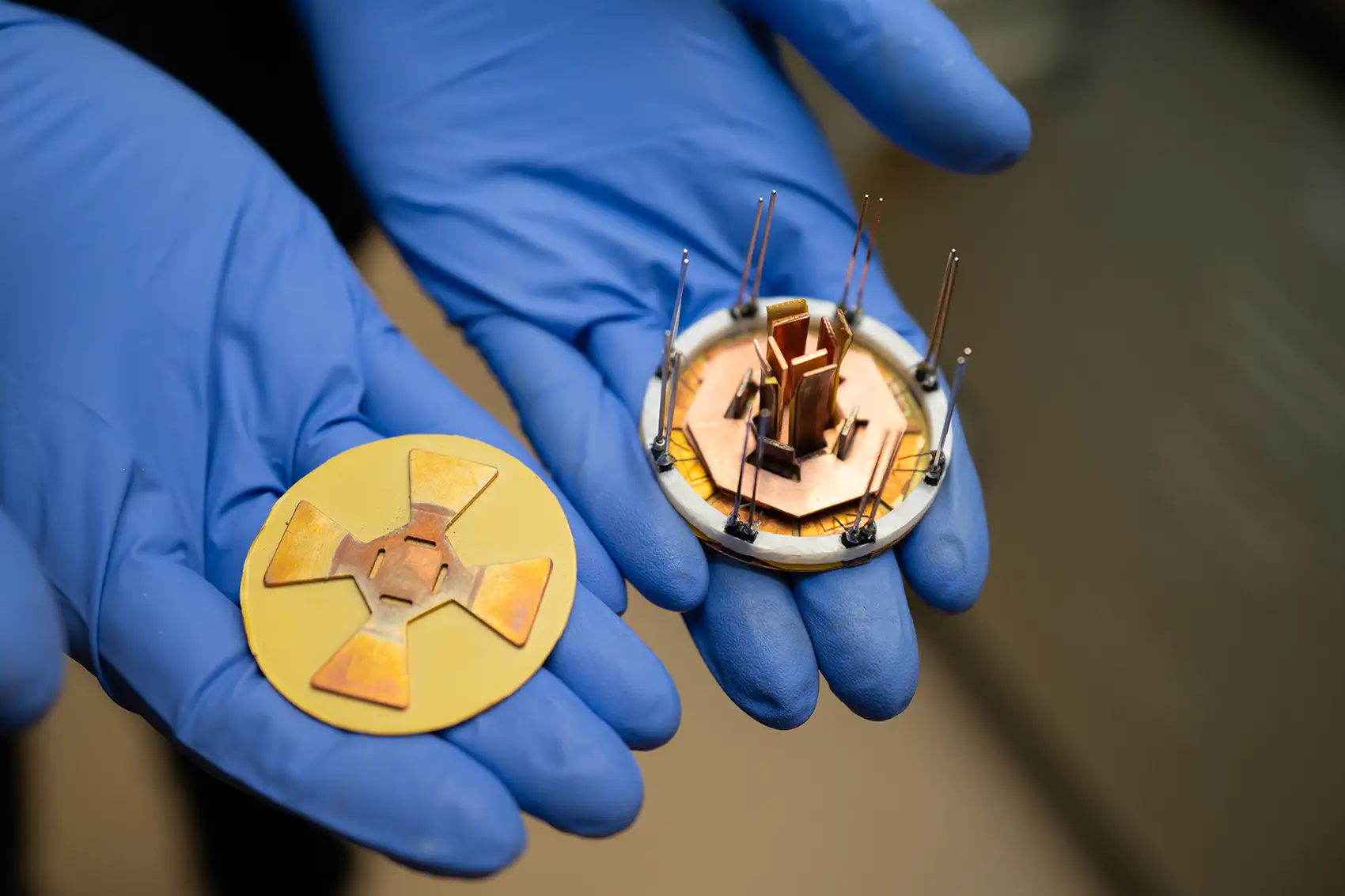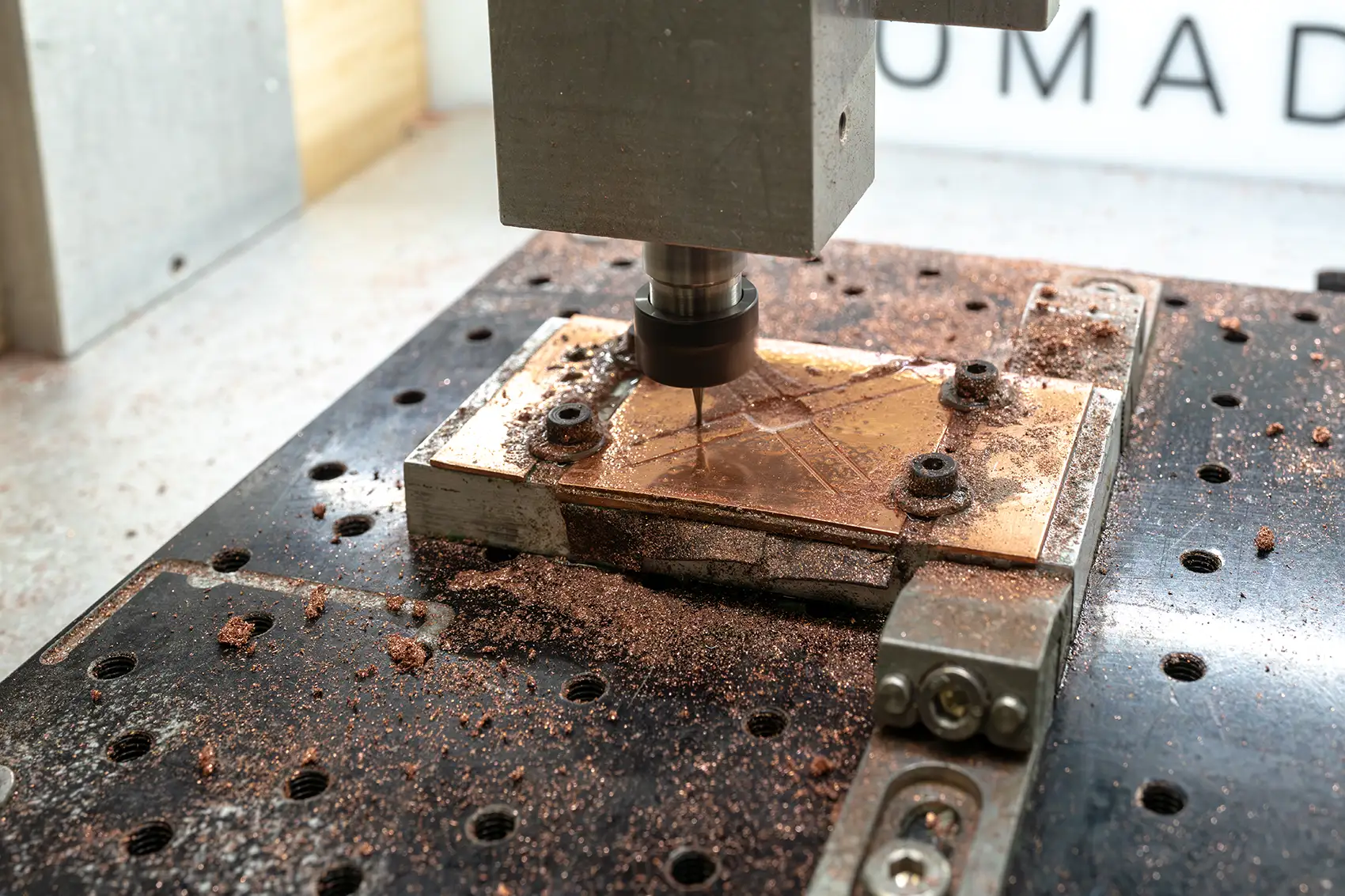NREL Researchers Build World’s Fastest, Low-Cost, Ultraefficient Silicon Carbide Power Module
The World Is Facing Rising Energy Demands. NREL’s ULIS Power Module May Be an Answer.

Global energy demands are surging, pushed by energy-intensive data centers powering artificial intelligence and increased manufacturing. How will the world meet these rising energy needs?
One answer is to get more use out of the energy we already produce and at a lower cost. In pursuit of this goal, NREL researchers have created a silicon-carbide-based power module—a physical housing for the power electronics that control the flow of electricity between systems—with never-before-seen efficiency, power density, and low-cost manufacturability.
The breakthrough, called NREL’s Ultra-Low Inductance Smart power module, is nicknamed ULIS. Powered by silicon carbide semiconductors, ULIS is capable of achieving five times greater energy density than predecessor designs in a smaller package, making it possible for manufacturers to build and power more efficient, compact, and lighter technologies. The 1200-volt, 400-amp power module is suitable for use in data centers, power grids, microreactors, and even heavy-duty vehicles such as next-generation aircraft and military vehicles.
Most importantly, ULIS boasts parasitic inductance—resistance to changes in electrical current, which is the primary hurdle to any electrical conversion—seven to nine times lower than any current state-of-the-art silicon carbide power module. Its ultrafast, ultraefficient switching of electrical current into usable forms allows ULIS to “squeeze” more usable power out of the electricity supply. This makes it a compelling solution to the world’s energy demand problem.
“We consider ULIS to be a true breakthrough,” said Faisal Khan, NREL’s chief power electronics researcher and the principal investigator for the project. “It’s a future-proofed, ultrafast power module that will make the next generation of power converters more affordable, efficient, and compact.”
Furthermore, Khan explained, ULIS is uniquely suited for high-intensity applications, like aviation and military operations, because the powerful, lightweight module also monitors its own state of health and can predict component failure before it occurs. For planes flying 30,000 feet above sea level or military vehicles traveling through combat zones, that level of reliability can mean the difference between life and death.
“ULIS was a truly organic effort, built entirely in-house here at NREL,” Khan said. “We are very excited to demonstrate its strengths in real-world settings.”
ULIS Features Entirely New, Low-Cost Design
Many of ULIS’ features are made possible by its wholly new design.
Unlike typical power modules, which assemble semiconductor devices inside a brick-like package, ULIS winds its circuits around a flat, octagonal design. The disk-like shape allows more devices to be housed in a smaller area, making the overall package smaller and lighter. At the same time, novel current routing allows for maximum magnetic flux cancellation, contributing to the power module’s clean, low-loss electrical output—in other words, its ultrahigh efficiency.
“Our biggest concern was that the device switches off and on very quickly, and we needed a layout that wouldn’t create a chokepoint within the design,” said Shuofeng Zhao, an NREL power electronics researcher who designed ULIS’ flux cancellation architecture.
One of the original layouts, Zhao said, looked like a flower with a semiconductor at the tip of each petal. Another idea was to create a hollow cylinder with components wired to the inside. Every idea the team came up with was either too expensive or too difficult to fabricate—until they stopped thinking in three dimensions and flattened the design into nearly two. Sarwar Islam, another NREL power electronics researcher on the ULIS team, came up with the 2D structure, which made it possible to build the module balancing complexity with cost and performance.
“We squished it flat, like a pancake,” Zhao said, “and suddenly we had a low-cost, high-performing design that was much easier to fabricate.”
Another NREL power electronics researcher, Joshua Major, ideated several fabrication innovations to build ULIS’ intricate architecture inexpensively using only NREL tools and lab facilities.
The fine balance the team found between the high electrical performance of a 3D design and a flat, fabrication-friendly layout unlocked ULIS’ full potential.
Second, where conventional power modules rely on bulky and inflexible materials, ULIS takes a new approach.
Traditional designs call for power modules to conduct electricity and dissipate excess heat by bonding copper sheets directly to a ceramic base—an effective, but rigid, solution. ULIS bonds copper to a flexible polymer, called Temprion, to create a thinner, lighter, more configurable design.
Because the material bonds easily to copper using just pressure and heat, and because its parts can be machined using widely available equipment, ULIS can be fabricated quickly and inexpensively. Manufacturing costs total hundreds, rather than thousands, of dollars.
ULIS can be fabricated quickly and inexpensively. Manufacturing costs total hundreds, rather than thousands, of dollars.
A third breakthrough allows ULIS to function wirelessly, as an isolated unit that can be controlled and monitored without external cables. That modular, Lego-like nature means it can slot into machines as different as data center servers, advanced aircraft, and military vehicles. The patent for this low-latency wireless communication protocol, spearheaded by NREL power electronics Sarwar Islam, is pending.
Finally, while the silicon carbide semiconductors powering ULIS represent the current state of the art, the ULIS research team has intentionally “future proofed” the design. ULIS can scale to accommodate advancements in semiconductor devices using silicon carbide, gallium nitride, and even gallium oxide, a promising avenue that has not yet been commercialized.
Each innovation adds to a single idea: that in a world where we rely on steady access to electricity, ULIS provides reliability.

ULIS’ Intentional Design for High-Intensity Applications Is Poised for Impact
Where could ULIS make an impact?
- Modernizing the U.S. power grid: Whenever energy is fed into the power grid, it has to be converted into a usable form. This process often relies on bulky, low-frequency transformers and conversion stations. ULIS’ ultrafast and efficient switching maximizes the amount of energy that reaches consumers, and its tolerance for high temperatures can lower maintenance costs over a power plant’s lifetime.
- Enabling advanced aircraft: Because ULIS can transfer electricity faster than other technologies on the market and conserve more electricity, it can enable high-performing, lightweight power converters for advanced aircraft. That means futuristic technologies like electric vertical takeoff and landing (eVTOL) vehicles—sometimes thought of as “flying taxis”—could become cost effective and high performing enough to be commercially viable.
- Powering cities and data centers through fusion: While commercial fusion reactors are still on the horizon, these energy systems could prove revolutionary by delivering power where traditional energy systems are difficult to build and maintain. ULIS’ ultralow inductance and compact, reliable design will make it possible to build the pulsed power components needed for future fusion systems.
In pursuit of steadier, lower-cost electricity, high-performance artificial intelligence, and advanced vehicle technologies, ULIS is now available to license. Reach out to NREL’s Lab Partnering Service to learn more.
Learn more about NREL's energy storage and transportation and mobility research. And sign up for NREL's transportation and mobility research newsletter to stay current on the latest news.
Last Updated May 28, 2025
